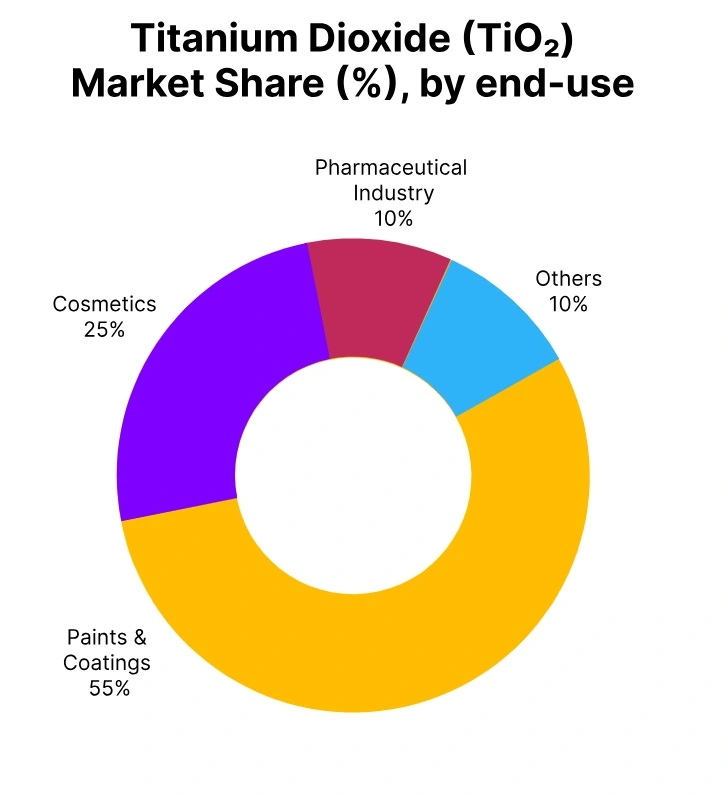Price-Watch’s most active coverage of Titanium DiOxide price assessment:
- TiO2 content, 92-96% (Rutile) FOB Shanghai, China
- TiO2 content, 97.50% min (Anatase) FOB Shanghai, China
- TiO2 content, 92-96% (Rutile) CIF Nhava Sheva (China), India
- TiO2 content, 97.50% min (Anatase) CIF Nhava Sheva (China), India
- TiO2 content, 97.50% min (Anatase) Ex- Thiruvananthapuram, India
- TiO2 content, 97.50% min (Anatase) Ex- West India, India
- TiO2 content, 97.50% min (Anatase) Ex- South India, India
- TiO2 content, 92-96% (Rutile) FOB Houston, USA
Titanium Dioxide (TiO₂) Price Trend Q3 2025
In Q3 2025, the global Titanium Dioxide (TiO₂) market displayed a steady-to-firm sentiment across major regions. The Anatase grade maintained moderate upward momentum, while Rutile witnessed mild corrections amid subdued export sentiment. Stable feedstock ilmenite and sulphur prices limited volatility, with demand from coatings, plastics, and construction sectors providing balanced support.
Chinese suppliers managed output cautiously, while Indian producers benefited from post-monsoon restocking. Market fundamentals stayed aligned with controlled inventory management, ensuring stable global trade dynamics. Looking ahead, Q4 2025 prices are expected to remain balanced-to-firm, supported by consistent industrial activity and seasonal recovery in downstream consumption.
United States
Titanium Dioxide Export Prices FOB Houston, USA, Grade: (92–96%).
In the third quarter of 2025, Titanium Dioxide prices in the United States exhibited slight weakness due to limited downstream demand in coatings, polymers, and construction related uses. Buyers have been cautious in their procurement approach given elevated inventories and slowing industrial activity as domestic producers managed operating rates conservatively to reduce the potential for pricing erosion.
The Titanium Dioxide price trend in the United States exhibited balanced supply and stable energy costs with resistance in the marketplace. In September, the price of Titanium Dioxide in the US markets fell by 0.08%, indicative of slight weakening.
China
Titanium Dioxide Export Prices FOB Shanghai, China, Grade: (97.50% min).
During Q3 2025, prices for Titanium Dioxide in China exhibited softness as downstream activity in coatings, paper, and industrial pigment sectors remained stable yet cautious. Export shipments to South and Southeast Asia continued as usual while domestic buyers were more selective in their purchasing amid stable inventory levels. In China, the price trend for Titanium Dioxide has been stable, with decent availability of feedstock and moderate operating rates preventing volatile pricing, despite soft buying sentiment.
In September 2025, Titanium Dioxide prices on a FOB Shanghai basis lowered by 0.05%, representing mild softness. Overall, in Q4 2025, it is expected that Anatase-grade TiO₂ priced will remain stable-to-firm as inventory levels remain balanced while export demand performs moderately well.
India
Titanium Dioxide Domestically traded prices Ex-Thiruvananthapuram, India, Grade: (97.50% min).
According to PriceWatch, in the third quarter of 2025, Titanium Dioxide prices in India followed a steady-to-firm course brought on by stable domestic demand from the paints, coatings, and paper sectors. Firm inquiries have been buoyed by construction in the south and steady utilization of pigment, while regional manufacturers have been operating at good levels without disruptions.
The pricing trend of Titanium Dioxide in India has been balanced due to adequate supplies and controlled production. Domestic distributors absorbed moderate import competition without significant pressure on the prices. In September 2025, Titanium Dioxide prices under Ex-Thiruvananthapuram, India terms gained 0.16% to maintain a mildly bullish sentiment.


